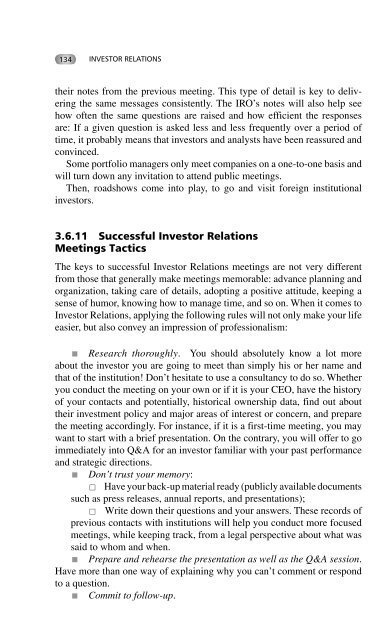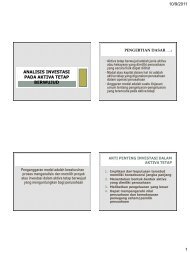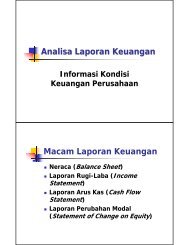Investor Relations
Investor Relations
Investor Relations
- No tags were found...
Create successful ePaper yourself
Turn your PDF publications into a flip-book with our unique Google optimized e-Paper software.
134INVESTOR RELATIONStheir notes from the previous meeting. This type of detail is key to deliveringthe same messages consistently. The IRO’s notes will also help seehow often the same questions are raised and how efficient the responsesare: If a given question is asked less and less frequently over a period oftime, it probably means that investors and analysts have been reassured andconvinced.Some portfolio managers only meet companies on a one-to-one basis andwill turn down any invitation to attend public meetings.Then, roadshows come into play, to go and visit foreign institutionalinvestors.3.6.11 Successful <strong>Investor</strong> <strong>Relations</strong>Meetings TacticsThe keys to successful <strong>Investor</strong> <strong>Relations</strong> meetings are not very differentfrom those that generally make meetings memorable: advance planning andorganization, taking care of details, adopting a positive attitude, keeping asense of humor, knowing how to manage time, and so on. When it comes to<strong>Investor</strong> <strong>Relations</strong>, applying the following rules will not only make your lifeeasier, but also convey an impression of professionalism: Research thoroughly. You should absolutely know a lot moreabout the investor you are going to meet than simply his or her name andthat of the institution! Don’t hesitate to use a consultancy to do so. Whetheryou conduct the meeting on your own or if it is your CEO, have the historyof your contacts and potentially, historical ownership data, find out abouttheir investment policy and major areas of interest or concern, and preparethe meeting accordingly. For instance, if it is a first-time meeting, you maywant to start with a brief presentation. On the contrary, you will offer to goimmediately into Q&A for an investor familiar with your past performanceand strategic directions. Don’t trust your memory: Have your back-up material ready (publicly available documentssuch as press releases, annual reports, and presentations); Write down their questions and your answers. These records ofprevious contacts with institutions will help you conduct more focusedmeetings, while keeping track, from a legal perspective about what wassaid to whom and when. Prepare and rehearse the presentation as well as the Q&A session.Have more than one way of explaining why you can’t comment or respondto a question. Commit to follow-up.











